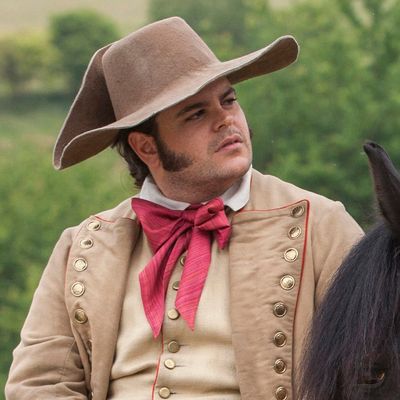
Mild spoilers follow for 2017’s Beauty and the Beast, which has a nearly identical plot to 1991’s Beauty and the Beast.
Most of Disney’s live-action Beauty and the Beast treads faithfully in the footsteps of the original, aside from an updated story line here and there, and a new song or two. (When Belle leaves, the Beast sings about being sad — a song that I swear is about 188 minutes long.) The most noteworthy change, which has already gotten press before the film’s release, is the fact that Josh Gad’s LeFou is gay, a Disney first, and he gets to have what director Bill Condon called a “nice, exclusively gay moment.” According to Condon, the change is tribute to the late Howard Ashman, who died of AIDS after writing the lyrics to the original film. It’s also in keeping with the progressive updates elsewhere in the film: Belle’s an inventor! She’s empowered! She’s a fan of Shakespeare, though the Beast, a true lit-bro, makes fun of her for loving Romeo and Juliet.
Watching Beauty and the Beast at an advance screening, I spent most of the film watching for that one “exclusively gay moment.” Reader, it takes a while to arrive. Early in the film, LeFou asks Gaston why he isn’t happy with just the two of them together, which is more of a slightly gay instant. Later, when Gaston asks him why he hasn’t settled down with a women, LeFou jokes that he’s too clingy — a vaguely gay insinuation. When he sings “Gaston,” he wraps Gaston’s arms around him, before Gaston pushes him aside — a gay-ish split-second. Then, as the villagers attack the Beast’s castle in the climax, LeFou shares a moment with Mrs. Potts, where she tells him that he deserves better than Gaston — some light gay condescension. Finally, an enchanted wardrobe attacks a trio of Gaston’s henchman, forcing them into powder, wigs, and dresses. Two are disgusted, but the third smiles — a sort of gender-bending moment. As the movie wound to the close, I worried the dress bit would be the “exclusively gay moment,” which would have been a cheat: It doesn’t mean the henchman is necessary gay or straight, just that he’s a fan of looking good.
But then, as the characters get together for a big celebration at the end of the film, the real “exclusively gay moment” arrives. During a group dance, LeFou starts off dancing with a woman, and then strikes up with the dress-loving henchman. It’s certainly a moment, because it lasts for two seconds at the most. It’s gay, in the sense that two male characters are doing something that expresses affection, though it feels so platonic they might as well be shaking hands. It’s certainly not exclusively gay, however, as other couples are still dancing in the background. To be exclusive, you have to exclude — get the straights out of the shot!
Disney can pat itself on its back all it wants for turning a villainous buffoon that was coded as gay in the original film into a morally ambiguous buffoon who is more obviously gay, confides in a teapot, and tries out dancing with a man. (And, to be fair, the mere existence of a gay character is still too much for some.) The true exclusively gay moment will have to come when two gay characters’ intimacy is actually at the center of the scene. Can we get a kiss? Or, since Moonlight won Best Picture, maybe even a hand job? We do hear nobody spits like Gaston.


